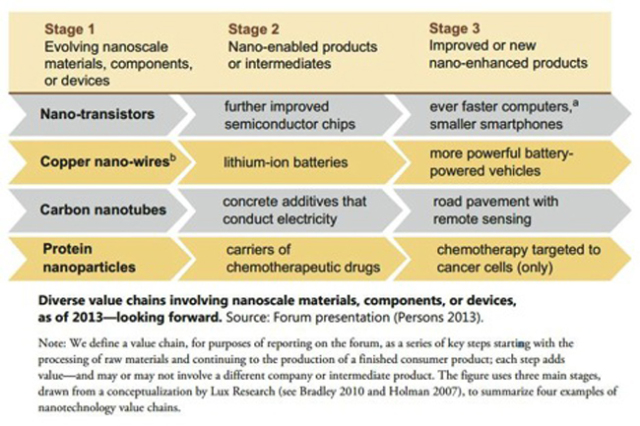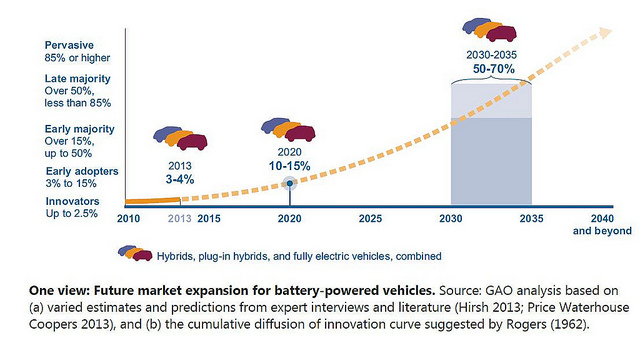Putting Nanomanufacturing in Context

Excerpted from GAO-14-406SP
Nanotechnologies that enable powerful battery-powered vehicles, for example, are potentially very significant in terms of future market expansion, as shown in the graphic below. As demand for products that include nanotechnologies increases, the process of moving these technologies from research labs to global markets will become more competitive. In addition, mass manufacturing and large-scale use of these technologies may have unanticipated environmental, health, and safety implications.
Excerpted from GAO-14-406SP
Furthermore, our forum experts identified a funding gap that can slow the manufacturing and innovation processes here in the United States. After government- and university-supported early stages of research, small and medium-sized U.S. businesses face what forum participants called the “missing middle” (as shown below). At this point, the absence of funding can prevent U.S. innovators from continuing to develop the nanomanufacturing methods and processes needed to prepare for commercialization, major industry investment, and competition in mass markets.
Excerpted from GAO-14-406SP
In May, our Chief Scientist, Timothy Persons, testified on these nanomanufacturing issues at a congressional hearing. The testimony outlined three main approaches to these challenges:- reviewing and renewing policies that undergird U.S. innovation;
- supporting public-private partnerships that address U.S. funding gaps as these apply to either manufacturing in general, or potentially, nanomanufacturing; and
- defining a vision and strategy for achieving and sustaining a high level of U.S. competitiveness in nanomanufacturing.
- Questions on the content of this post? Contact Timothy Persons at personst@gao.gov.
- Comments on the WatchBlog? Contact blog@gao.gov.

GAO's mission is to provide Congress with fact-based, nonpartisan information that can help improve federal government performance and ensure accountability for the benefit of the American people. GAO launched its WatchBlog in January, 2014, as part of its continuing effort to reach its audiences—Congress and the American people—where they are currently looking for information.
The blog format allows GAO to provide a little more context about its work than it can offer on its other social media platforms. Posts will tie GAO work to current events and the news; show how GAO’s work is affecting agencies or legislation; highlight reports, testimonies, and issue areas where GAO does work; and provide information about GAO itself, among other things.
Please send any feedback on GAO's WatchBlog to blog@gao.gov.
